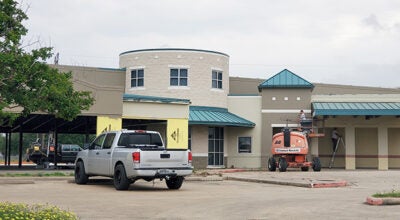County moves ahead on McFaddin dune restoration
Published 7:21 pm Monday, July 6, 2015
Apollo Environmental to continue second leg of coastal project
BEAUMONT — The Jefferson County Commissioners’ Court plowed ahead with its coastal restoration Monday, just days after speculating how a record $18.7 billion settlement between energy giant BP and five Gulf Coast states could benefit the county’s marshland.
Last week Fred Jackson, assistant to Jefferson County Judge Jeff Branick, said if a federal judges gives the settlement — agreed upon Thursday morning by BP and the states devastated by BP’s 134 million oil spill in 2010 — the final OK, Jefferson County could finally realize the completion of its McFaddin National Wildlife Dune Restoration project.
On Monday, the Commissioners’ Court unanimously awarded the second phase of the dune restoration project to Apollo Environmental Strategies, Inc. — the Beaumont-based company responsible for the four and a half miles already completed along McFaddin Beach.
Don Rao, Jefferson County engineering director, said re-establishing the dune system that used to span 20 miles along the coasts of Jefferson and Chambers counties has been a collaborative effort between the Jefferson County Engineering Department and the Texas General Land Office.
Rao said Monday financing the project has required some creativity. There are so many phases to actually re-establish the McFaddin dunes that different projects qualify for different agency funding.
The current phase awarded to Apollo Environmental — building a clay berm to act as the foundation for the future dunes — is being paid for by Round 2.2 of the county’s Hurricane Ike disaster funding.
Later stages of the dune restoration project will be able to use funding from both the U.S. and Texas Departments of Fisheries and Wildlife, as well as any money Jefferson County is awarded in the BP settlement.
“Re-establishing these dunes is going to be a lengthy process, but we’re excited to move forward,” Rao said. We’re about four and a half miles completed on that first leg of the project — putting down the clay berm that acts as the core of the entire dune system.
“This second leg of the berm project is going to pick up where the first leg ends and continue into Chambers County a little ways. Our goal right now is to put in a protective barrier for our lowest marshland. Because Apollo Environmental is doing both phases of the berm project, they’ll just move right into Stage 2 as soon as they wrap up this first one.”
Rao said the second leg of the berm project is the final phase to complete the foundation of the dune system. When Apollo Environmental completes both legs of the projects, he said, the county will have a clay core that spans about 10 to 11 miles of the county’s coast.
Branick said Monday he’s looking forward to finishing the clay berm so the county can move into the next stage of the dune restoration — covering the clay with offshore sand to make the official dune system.
“That will be a separate project on its own with its own funding,” Branick said, “but things are looking good for our BP settlement. Now that this is nearing an end, hopefully, these vital projects along our coast will start getting some traction.”
Twitter: @crhenderson90





